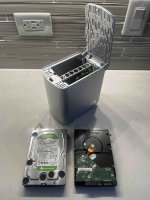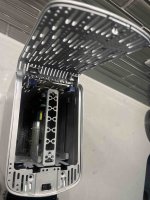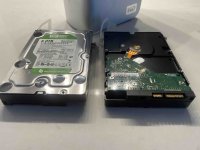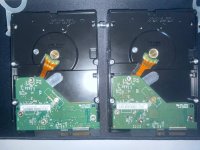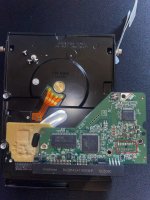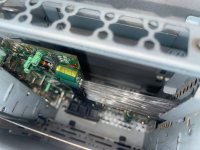SennaSempre
New member
Hello, this is my 1st post and the reason why I joined. I have a water-damaged hard drive 6TB that had water on-or-in it for 1 day and then I dried it out. I see no water corrosion damage anywhere on the drive itself or the internal control board in the chassis or housing.
This hard drive would not power up when plugged into a 15" MacBook Pro but it did when plug into a 27" iMac using the same stock AC adapter. The power status with the 27" iMac has the front light blinking but no spinning of the platters.
I read that it could be a problem with the control board in the housing unit and to use a SATA-USB connector straight into the computer which I've done to no avail. I've tried this 3.3V pin tape-hack explained in Step 14 here -
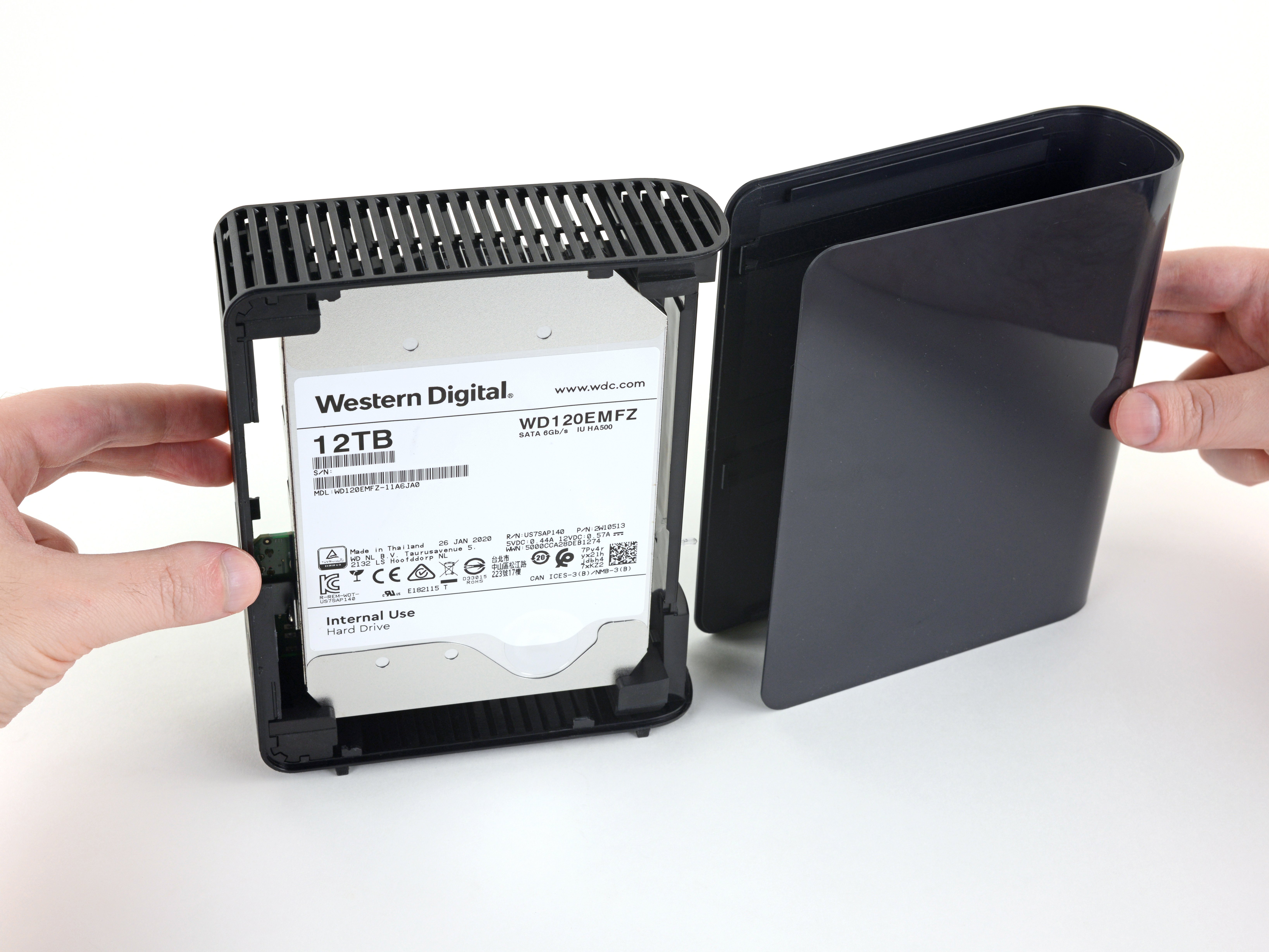
 www.ifixit.com
www.ifixit.com
...and still nothing on both drives. I don't know what else I can do which is why I'm asking you. Some extra links to the exact model I have with the online manual and attached photos. Any advice is greatly appreciated, thank you.
Online Manual - https://www.manua.ls/western-digital/my-book-studio-ii/manual
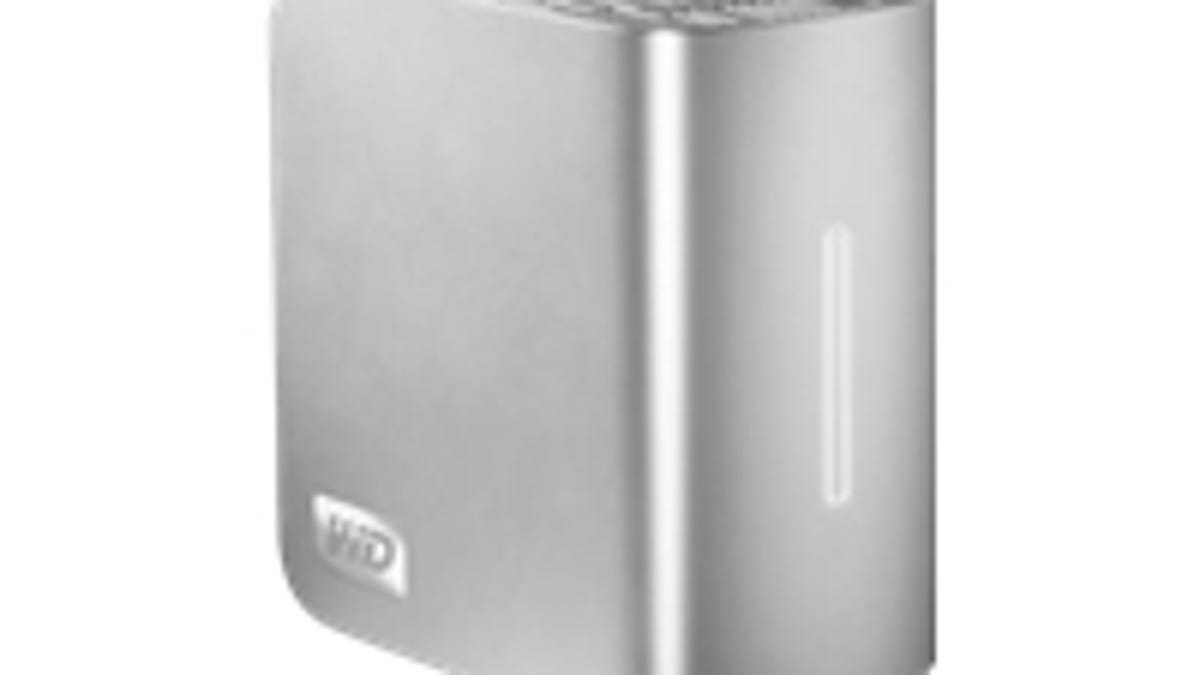
 www.cnet.com
www.cnet.com
 www.anandtech.com
www.anandtech.com

 www.storagereview.com
www.storagereview.com
This hard drive would not power up when plugged into a 15" MacBook Pro but it did when plug into a 27" iMac using the same stock AC adapter. The power status with the 27" iMac has the front light blinking but no spinning of the platters.
I read that it could be a problem with the control board in the housing unit and to use a SATA-USB connector straight into the computer which I've done to no avail. I've tried this 3.3V pin tape-hack explained in Step 14 here -

How to Shuck a WD Elements External Hard Drive
Shucking an external hard drive involves disassembling the external enclosure and harvesting the bare hard drive inside. From there, you can use...
...and still nothing on both drives. I don't know what else I can do which is why I'm asking you. Some extra links to the exact model I have with the online manual and attached photos. Any advice is greatly appreciated, thank you.
Online Manual - https://www.manua.ls/western-digital/my-book-studio-ii/manual

Western Digital My Book Studio Edition II review: Western Digital My Book Studio Edition II
Western Digital My Book Studio Edition II
Western Digital My Book Studio Edition II 6TB Review

6TB Western Digital My Book Studio Edition II Review (WDH2Q60000)
In March, Western Digital announced an extension to their My Book Studio Edition II dual-drive storage…

